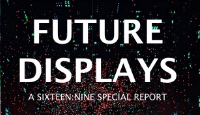
Houston’s New Smart City Display Network Generates Revenue By Selling Viewer Data
February 15, 2022 by Dave Haynes
Kiosk industry follower and consultant Craig Keefner has an interesting post up on one of his sites about how a smart city media company makes money from digital display smart totems it puts in for free in large cities.
The post in Design Smart City looks into a deployment of 25 kiosks by IKE Smart City in several neighbourhoods around Houston, Texas – featuring back-to-back digital touchscreens that carry different applications like business directories, social services listings and points of interest.
With sidewalk digital displays that are not touted as smart city products (and sometimes even when they are), the main revenue stream and reason for being is DOOH advertising. In this case, the revenue model appears, at least, to be more about accumulating and selling viewer data. Ike, however, is a venture of a DOOH media firm, Orange Barrel Media.
Keefner gets into the core question: How Does IKE Make Money?
The types of information their kiosks collect becomes a little clearer in IKE’s interactive section.
The QR code will anonymously link your mobile device to the applications. If your mobile device is not capable of accessing the applications by scanning the QR code, you may access these features by providing the information requested by the Kiosk, some of which may personally identify you.”
IKE claims that they will not share or sell users personal information to third parties, but then the next paragraph they say the exact opposite.
“[I]n choosing to engage these features, you agree that we can provide the information you give to a Kiosk, including any information that may personally identify you, to that Third-Party Partner: (a) 311; (b) Get Around; and (c) Photo Booth.”
Basically, what IKE is saying is that anyone who uses IKE’s kiosks agrees to give their personally identifiable information (PII) to them and third parties. So much for respecting users privacy.
IKE goes on to explain that 311 user information is stored by Third-Party Partners.
“With respect to any feature operated by a Third-Party Partner, the Kiosk will only store the information you provide long enough to perform the service you request. After that, the information will no longer be retained by the Kiosk or IKE, but it may continue to be retained by the Third-Party Partner.”
IKE’s WiFi Service section says their kiosk’s might “share certain technical information with the internet service provider across the Wi-Fi signal.” But users shouldn’t worry because IKE deletes their PII every 12 months.
This is nearly the exact same business model that “Smart City Kiosks” used in New York City three years ago, the only difference is that that IKE’s kiosks are not equipped with microphones.
So how does IKE make a profit? It appears that IKE makes money from letting Third-Party Partners pay for the right to collect users PII information.
Users of IKE kiosks should be concerned about two things.
- Sharing certain technical information with an “internet service provider” is a slick way of saying IKE and Third-Party Partners are IDing every Bluetooth enabled device.
- The second concern is third party internet service providers are under under no obligation to delete a user’s personal information every 12 months, or ever.
Things get a lot more disconcerting after reading IKE’s “Camera” section.
“Each Kiosk may be equipped with one or more cameras. The cameras capture images of the area surrounding the Kiosk, and those images may include you. We will not keep any footage captured by any camera for longer than 15 days, unless the footage is necessary to investigate an incident. Furthermore, we will not use or disclose data collected by our cameras except to improve the functionality and ensure the security of the Kiosks, as necessary to address illegal activity on, associated with or perpetrated against the Kiosks or in the surrounding area, or if we believe the disclosure is required by law or in the interest of public safety.”
Everyone passing in front of an “IKE Smart City” kiosk will be recorded and have their images stored for at least 15 days. Except of course if IKE or law enforcement want to save the footage, then it is anyone’s guess how long they will retain the footage for.
IKE’s “disclosure of information” section is basically an indemnity clause against future lawsuits.
Editors Note: Worth noting that as of Feb 2022, the Senate has a new commission on privacy
Interesting … I’ve wondered how media companies were able to make a profit from outdoor display totems, given the high upfront capital costs and ongoing operating costs of sensitive electronics plopped on sidewalks in all kinds of weather, and in reach of all kinds of people – some who will try to break them just because … It has been a financial struggle for the so-called smart city totems put in New York and London – which would seem to be ideal media markets for this.
I had not thought about selling PII data, but it makes sense. And audience metrics are pretty much bundled, anyway, with ad sales – in terms of characterizing the audience, viewing patterns and so on.
These kinds of displays are, of course, by no means the only way PII is being accumulated. Social media and apps are the most obvious data miners and re-marketers. I am guessing that digital displays with cameras or other sensors get a lopsided amount of attention and concern because they are physical manifestations of an effort, versus the digital collection from social media, apps and websites that happens on the personal devices of users.
Houston’s mayor, at the launch of the kiosks last week, reinforced the pro/con trade-off argument that residents get a useful amenity in public spaces without expending finite tax dollars.



Full credit to MassPrivatel and user Mapi who did the original surmise — https://massprivatei.blogspot.com/2021/11/free-interactive-kiosks-surveil.html